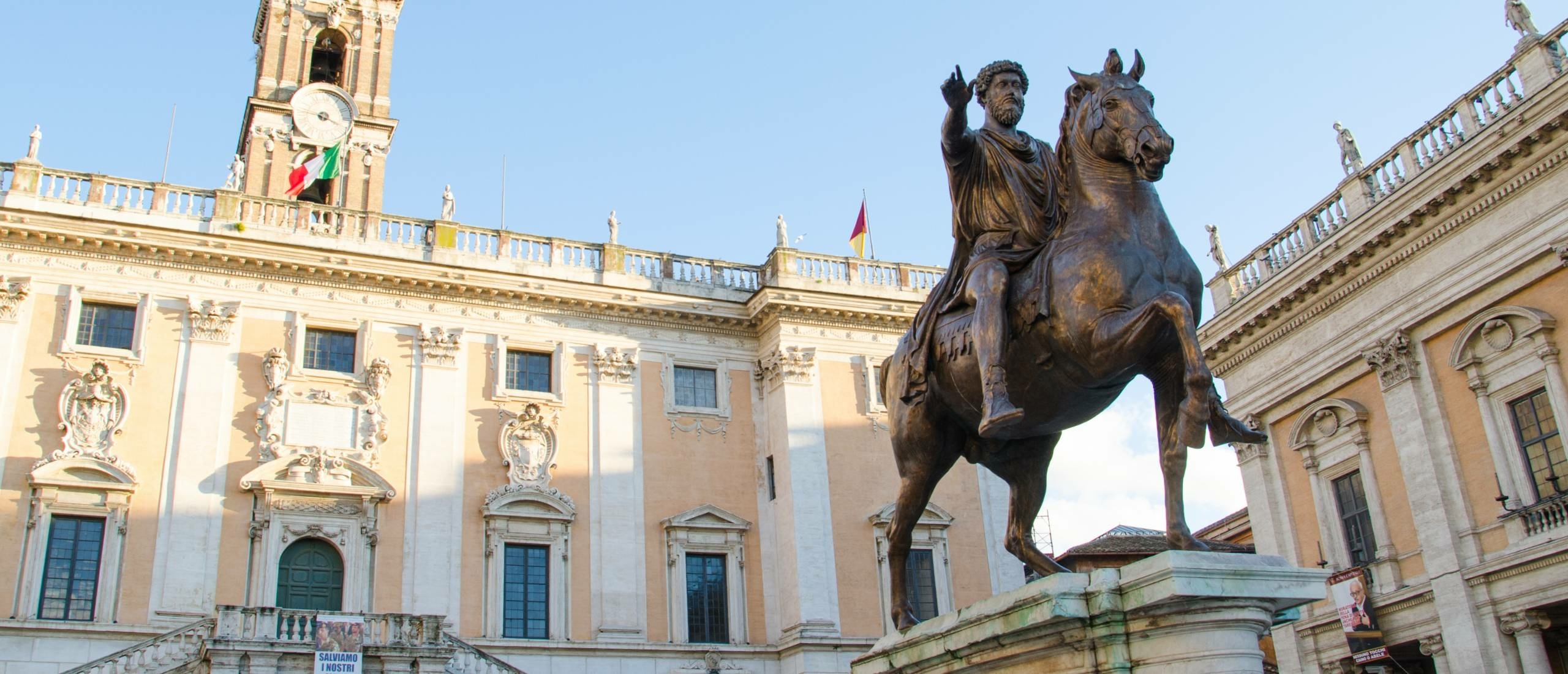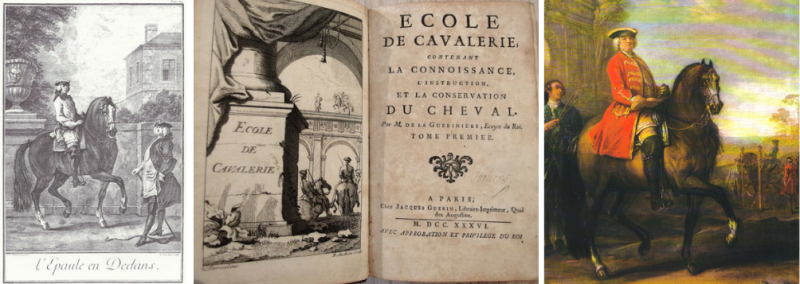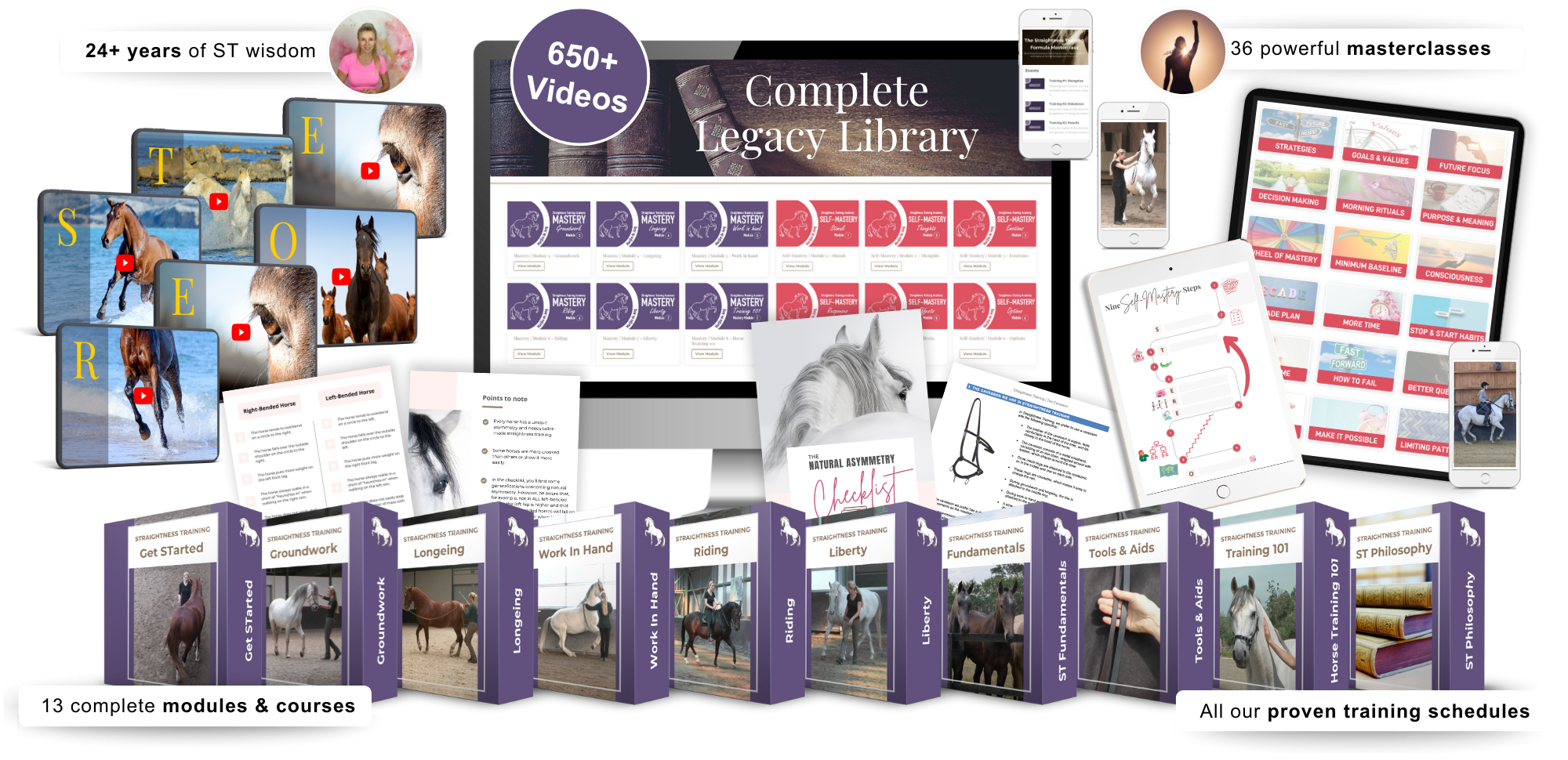
The War Horse
In Straightness Training, we see our horse as a war horse. Now, don’t take this literally. It’s not about fighting or domination.
It’s about awakening your horse’s true potential.
It's about flexibility, mobility, agility, and being prompt, precise and polite.
All the qualities that once made the war horse the most reliable and responsive partner a rider could ever have.
When I first started training my horse Maestro, I didn’t realize I had forgotten who my horse really was.
Watch the video to hear more about it:
To understand why we perceive our horse as a war horse's let's dive a little bit into history.
Goal-Oriented Riding
In the era of Xenophon (BC) all the way up to Antoine the Pluvinel (16th century), horses were trained for battle and man-to-man fights. It was a matter of life and death.
Only the horse that was balanced, supple, mobile, and strong could protect the rider and itself. The king or knight who had the best-educated horse had the best chance to survive, and to win.

To get a horse ready for the battle field, they used a logical system of progressive exercises. Every exercise had a clear goal: to prepare the horse to move freely, respond instantly, and stay calm and couraguous under challenging circumstances.
That was true goal-oriented riding: training with purpose and precision so the horse could become a true war horse.
Goal-Liberated Riding
In the Baroque era (early 17th to the mid-18th century), times of peace brought prosperity, and riding evolved into a form of art, like ballet, but then a dance between horse and rider.
Riding masters like François de la Guérinière refined the training into L'art pour l'art: The art for art’s sake.

The goal was no longer survival, but expression.It became about ulitmate collection, elegance and grace. The horse became a living work of art.
This was, what we call, goal-liberated riding. The purpose shifted, but the foundation of the horse's education remained because it was done with the original goal in mind.
Goal-Alienated Riding
Then came the Napoleonic wars (19th century), where no longer highly educated Baroque horses were used — quality — but large groups of warmbloods and thoroughbreds — quanitity. Later on, horses disappeared from the battlefield, replaced by machines.
After World War II (1945), the military took over what remained of classical riding. The book of Gustav Steinbrecht explained how to educate these warmbloods and thoroughbreds to the highest levels to keep them strong and sound.
But then modern competition systems were born. And somewhere along the way, riders start to lose sight of the essence of real horse training.
Today, many riders use the horse for dressage instead of using dressage for the horse. We see stress in the mouth, tension in the back, and strain on the front legs:

When the goal is lost, the training loses meaning.
This is what we call goal-alienated riding.
The essence of gymnastic, purpose-driven training is forgotten, and the horse becomes an object instead of a partner.
Maestro the War Horse
For a while, I wanted to do competition dressage with Maestro as well... but that didn't work out well.
Then I started reading the books of the old riding masters, and I realized Maestro wasn’t just a horse to ride:
I needed to prepare him for the job.
Seeing him as a war horse changed everything.

The War Horse Mindset
So what does it mean to see your horse as a war horse today?
Again, it’s not about fighting or domination.
It’s about awakening all the qualities that once made the war horse the most reliable and responsive partner a knight or king could ever have.
It means training your horse to be:
- Flexible in body
- Mobile in movement
- Agile in turning
- Promp in response
- Precise in behavior
- Polite in the mind
- Couraguous in emotion
- Cool, calm & collected in spirit
And a true partner — not just an obedient horse.

The STrategy
As you could see in the video, the STrategy to help your horse become a true war horse is:
1. Supple the body — stretch the short muscles and activate the long ones, first from the ground without the rider’s weight.
2. Supple the hind legs — one leg at a time, like lunges before squats. Later, with strength, both legs carry together.
This is how we use dressage as exercises for your horse, instead of using the horse for dressage.
Your next STep
Straightness Training helps you educate your war horse and create balance and harmony with your horse.
Join the FREE Straightness Training Masterclass and learn exactly how to help you horse become a real war horse:

